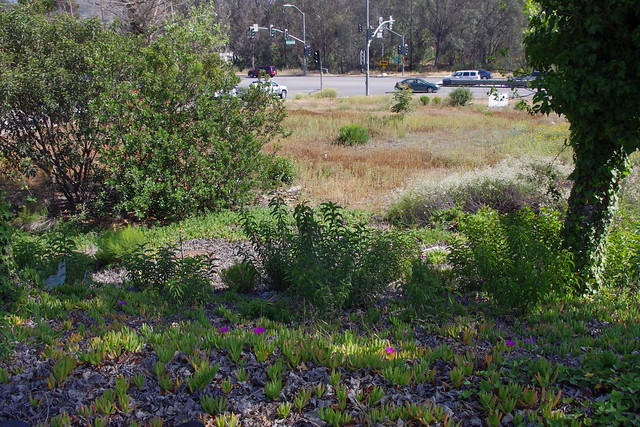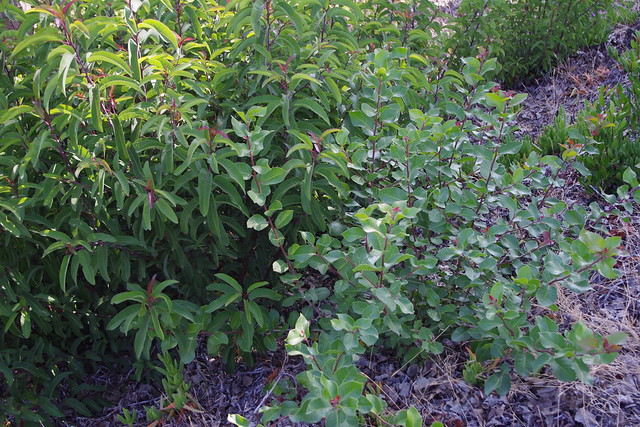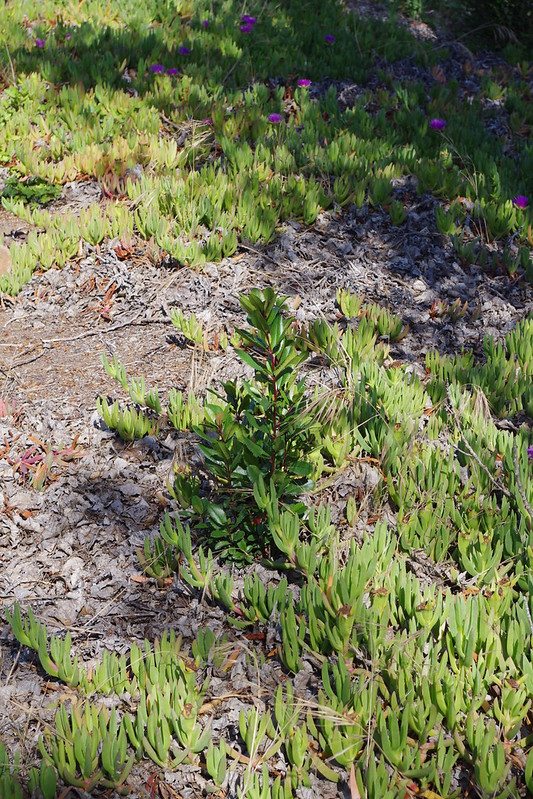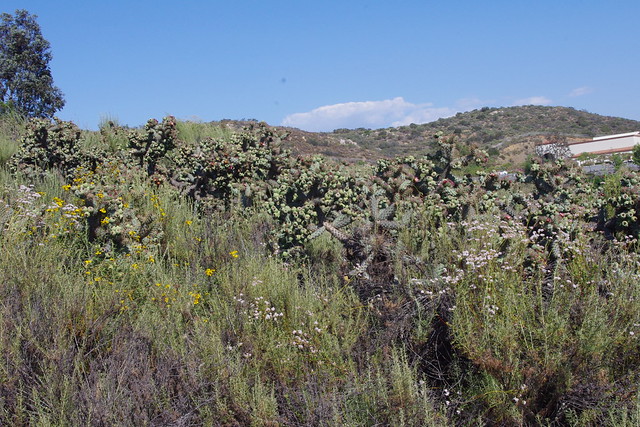I discovered something remarkable when I attempted to document one of the rare cacti colonies left in San Diego County of Coastal Cholla cactus. I found a commercial center parking area landscape being invaded by California Native Plants ?
Native Plants = ( Laurel sumac - Toyon - Coyote Broom - Sugarbush - etc, etc, etc)
Invasive Plants = ( Star Thistle - Wild Mustard - most Non-native Ornamental Landscape Plants from retail nurseries - etc, etc, etc )
 |
| Photo Credit: Mine! |
 |
| Photo Credit: Mine! |
Laurel Sumac (Malosma Laurina) aggressively making inroads on the Sea Fig ice plant bank. Much larger more mature parent plants of both the Toyon & Laurel Sumac in the background are no doubt donating the necessary seed base for the reoccupation of former wild native plant habitat.
 |
| Photo Credit: Mine |
Here is a side view of the bank next to the parking lot with the immediate volunteering of Laurel Sumac retaking it's former prime real estate. Though you may not see them, behind all of these are several California Holly (Toyons) also making an aggressive run on the exotic commercial landscape.
 |
| Photo Credit: Mine! |
This scene was a pleasant surprise. Two cousins, Laurel Sumac on the left and Sugarbush (Rhus ovata) on the right. I have never in my life seen them growing side by side in the wild. Not that they don't elsewhere, I've just never seen it. Generally Laurel Sumac is associated with the lower growing coastal sage scrub, while the Sugarbush is mostly inland and mixed with taller bulkier chaparral shrub species at higher elevations. Very kool! I guess they have to meet at the border of their terrains somewhere.
 |
| Photo Credit: Mine! |
This is a young California Holly or Toyon (Heteromeles arbutifolia) seedling above appears to be in very healthy condition. It's beautiful and if the commerical property owners and their landscapers are smart, they'll leave it well enough alone. The main reason this Toyon sapling is gaining such a strong healthy looking foothold here is because water rates are outrageous in Southern California and as the drought lingers on will most likely increase water rates which will change irrigation habitats. Here the Sea Fig is incapable of choking out native plant competition. So the drought is actually helping the native plants to retake former lost territories. A smart landscaper will use that to hs advantag. Allow natives to grow, thin out some and sculpt the others in a natural artistic form to provide a pleasant nature landscape with will mostly be maintenance free and watering requirements to be greatly cutback.
 |
| Photo Credit: Mine! |
| Photo mine May 2014 Coronado Hills in San Marcos California - Cocos Fire |
 |
| Image Mine - May 2013 |
 |
| Photo by James Gallagher, Sea and Sage Audubon |
(Cylindropuntia prolifera) San Diego's Coastal Cholla Colonies Still Thriving on some Wildlife Islands within the city
No comments:
Post a Comment
Thanks for visiting and for your comments!
I will try to respond to each comment within a few days, though sometimes I take longer if I'm too busy which appears to be increasing.